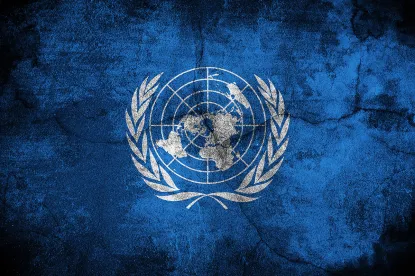The world will gather in Glasgow, Scotland, for the next round of global climate negotiations – the twenty-sixth Conference of the Parties to the United Nations Framework on Climate Change (COP26) – during the first two weeks of November. COP26 is a continuation of the process to flesh out the details and to implement the Paris Agreement, which committed almost every nation to reduce their greenhouse gas (GHG) emissions. The Paris Agreement sets a goal to keep the global average temperature from rising by 1.5°C (2.7°F) above preindustrial levels and, failing that, prevent it from increasing by 2°C (3.6°F).
The overarching objective of COP26 is for nations to make updated commitments and develop realistic implementation plans to keep the 1.5°C goal within reach. The United Kingdom, the chief sponsor of COP26, identified additional goals, including:
-
Secure global net zero GHG emissions by 2050
-
Accelerate the phase-out of coal for energy generation
-
Curtail deforestation
-
Speed up electrification of the transportation sector
-
Encourage investment in renewable energy generation
-
Facilitate adaptation of communities and ecosystems
-
Mobilize public and private sector financing to achieve mitigation and adaptation goals
-
Global collaboration, including finalization of the rules to implement the Paris Agreement
Consensus among all nations on these goals is unlikely or, at minimum, there will likely be disagreement on the timing and the specific actions necessary to meet these goals. The G-20 nations – that account for approximately 80% of global GHG emissions – will meet this weekend in Rome as a precursor to COP26. The nature of any consensus (or lack thereof) may be evidenced from this meeting, but, even then, there are heads of state from key nations (e.g., China, Russia) who are likely to be absent.
What is on the agenda for COP26? The rest of this post highlights in more detail a few of the issues that will be the focus of the conversation in Glasgow.
-
National Determined Contributions. Nationally determined contributions (NDCs) are the keystone of the Paris Agreement and reflect efforts by each country to reduce national GHG emissions to meet the Paris Agreement’s goals. NDCs are supposed to be submitted every five years and, over time, successive NDCs are expected to increase the goals for GHG emission reductions. President Biden announced earlier this year the US’s updated NDC, which aims to cut GHG emissions from 2005 levels by 50% by 2030. Nations must then pursue domestic mitigation strategies to meet the NDCs. The ongoing wrangling on Capitol Hill on infrastructure and spending legislation is focused, in part, on climate-related investments and other initiatives to deliver on the US’s NDC. A critical issue heading into COP26 is will other nations that are critical to meeting the Paris Agreement’s goals submit updated NDCs – and plans to realistically achieve the goals – before or during the conference. The Parties will also need to resolve differences on NDC timeframes (g., start and end dates) and other practical implementation issues.
-
Carbon Markets. As we wrote about earlier this week, Article 6 of the Paris Agreement establishes a new framework for global carbon markets. Carbon markets are tools – regulatory and voluntary – that aim to cost-effectively reduce the emission of carbon dioxide (CO2) and other GHGs and are viewed as the primary market-based vehicle to meet the ambitious Paris Agreement goals. One issue is that the Parties have not reached agreement on the framework to operationalize Article 6 (e., the “Paris Rulebook”). Resolution on the rules for Article 6 have been hampered by conflicts between countries on certain principles, for example, Brazil has insisted on relying on Kyoto-based credits to meet its Paris-based NDC (i.e., double counting). Answering some of these questions associated with carbon markets and the efforts to finalize the Paris Rulebook in the context of Article 6 will be closely watched and one measure of the success of COP26.
-
Adaptation. The Paris Agreement established a goal to increase adaptation efforts (e., global resilience and reduce vulnerability to climate-related impacts). The conversation on adaptation often focuses what developed countries (i.e., the G-20 countries) should be doing, given they contribute the majority of global GHG emissions, to assist with adaptation efforts in developing countries. The United Nations Secretary-General Antonio Guterres has stated that adaptation-related needs will likely rise to $300 billion a year by 2030, which raises the question how will these needs be met. One question for COP26 is the priority that adaptation issues will be given when there are pressing mitigation issues and questions.
-
Finance. Related to mitigation and adaptation is financing; who is going to pay for the efforts necessary to meet the goals of the Paris Agreement. The Paris Agreement expects developed countries to contribute $100 billion per year – from public and private sources – to assist developing countries with mitigation and adaptation. To-date, climate-related finance has yet to reach this goal. President Biden announced the US would increase its climate financing to approximately $11 billion per year by 2024. Further, Canada and Germany led efforts to develop a “Climate Finance Delivery Plan,” which was announced earlier this week and seeks to provide clarity on when and how developed countries will meet the $100 billion climate finance goal. One issue to watch at COP26 is the reaction to this plan and the level of commitments from other countries. Another issue is what will be the financing goal(s) and the associated frameworks post-2025.
-
Methane. Beyond CO2, methane has been a focus in the run-up to COP26. The US, the European Union and other nations are advocating for a global methane pledge that seeks to reduce methane emissions by at least 30 percent by 2030. The global methane pledge will be launched during COP26. China, the world’s largest emitter of methane, has yet to join this effort, and the question for COP26 is what other nations will join this initiative and what domestic-focused policies and actions will be proposed to achieve this goal.
-
Coal. The United Kingdom, the host of COP26, has called on developed countries to cease using coal as an energy source by 2030 and for all nations to phase it out by 2040. This is an issue to watch closely and the nature of any push back from countries like China and India who rely on coal for their base load energy generation and who have recently been forced to manage energy-related crises. Whether or not there is consensus on this issue as framed by the United Kingdom, there may be coal-related announcements during COP26 similar to announcements by China, Japan and South Korea that those nations would no longer finance coal energy projects abroad in countries like Vietnam and Indonesia.
-
Transparency. A key issue regarding the implementation of the Paris Agreement is transparency. Nations agreed to adopt a transparency framework by 2024, including requiring all countries to report on their GHG emissions, identification of the progress toward achieving their NDCs, and identification of how their countries will be impacted by climate change and the associated adaptation needs, among other issues. Currently, there is non-uniform reporting and deficiencies in global information and verification of GHG emissions that are likely necessary for transparent monitoring of the progress toward achieving NDCs and the goals of the Paris Agreement. Transparency-related issues will also be important in the context of global carbon markets and ensuring implementation of the Article 6 framework will reduce GHG emissions in the real world and not just on paper.
What happens during COP26 and the takeaways from Glasgow could have significant implications around the globe. Just as national initiatives and policies in the run-up to the conference may influence the COP26 negotiations, the results of COP26 could alter the climate change narrative and impact domestic politics and policymaking. In the US, even if COP26 is less impactful at the federal level, it could influence sub-national – state and local – initiatives. Further, many multinational corporations have publicly stated their support for the Paris Agreement and its goals and the results of COP26 may factor into future corporate decision-making independent of subsequent government action or inaction. There are a wide range of issues to follow during COP26 and we expect the conversation to continue long after the world departs Glasgow.








 />i
/>i
